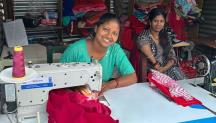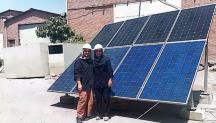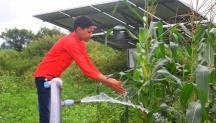

Solar-Based Solutions Improving Livelihoods in Rural Areas
Newsletter
Organisations around the world are teaming up to help rural communities gain access to basic energy needs through renewables
In Majhuee, a village nestled in central Nepal, Raj Mani Chaudhary and his wife depend on fish and vegetable farming for their income. The couple used to spend NPR 2500 (USD 24) per month to operate and maintain a diesel pump for their farm, but as their pump got older, so did the cost and frequency of its repairs. Slowly this was becoming unsustainable and something had to change.
Change meant turning to solar power.
“We’ve saved a lot of money on fuel by switching to solar,” says Raj about installing a solar pump for his farm. “Our costs on diesel have been reduced by over 75 per cent, so we now have more money to do other things.”
The solar pump’s steady flow of water throughout the day has been enough to maintain the Chaudharys’ two fishponds and water their 675 square meters of farmland.
“I now only need to use the diesel pump during extremely cloudy days,” Raj says. The automatic operation of the solar pump also means Raj no longer has to travel to the field twice a day to operate the pump — the automatic pump starts early in the morning and stops in the evening on clear days, maintaining the water level of his fish ponds and freeing his time for other activities.
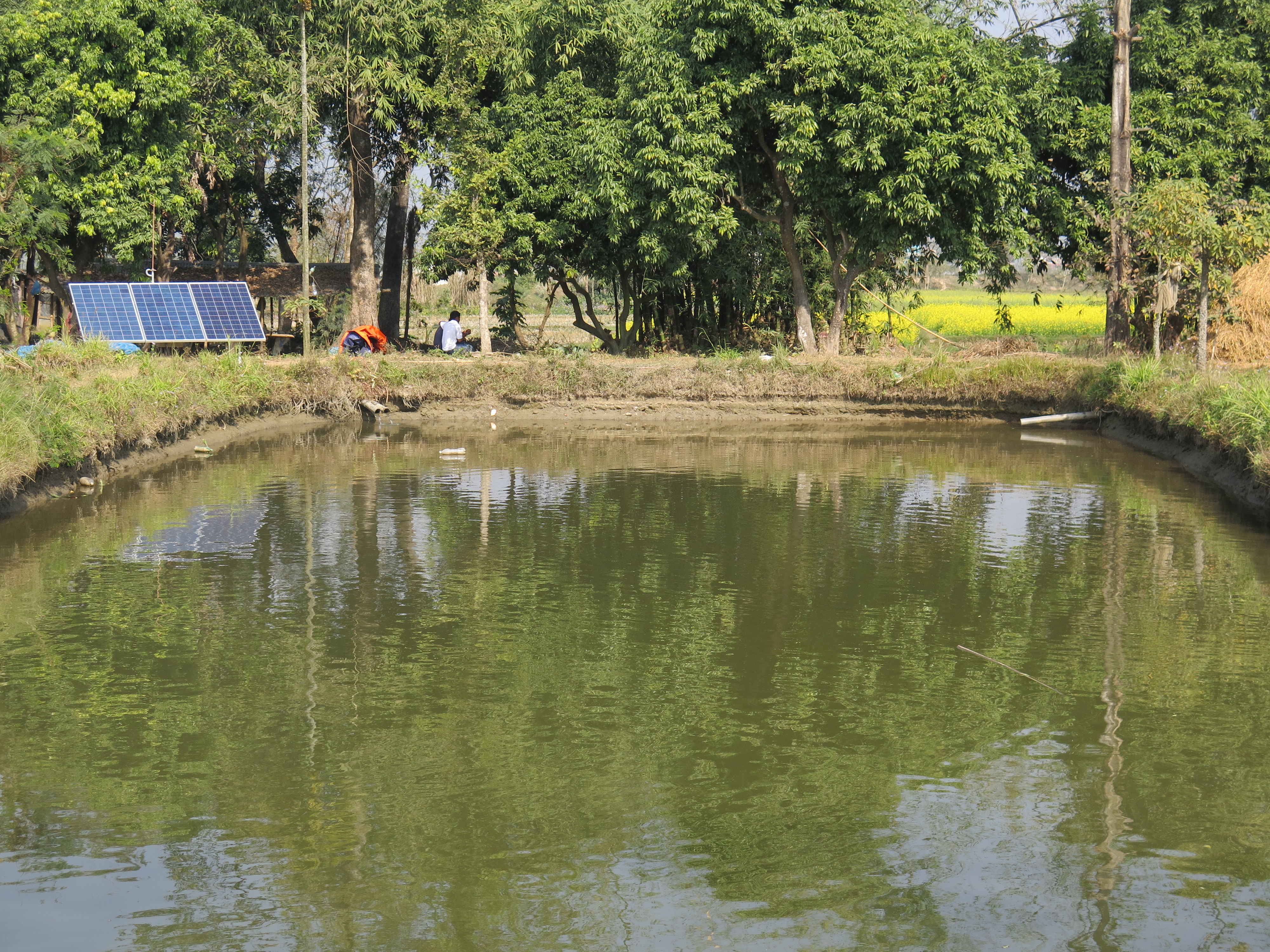
Raj Mani Chaudhary's solar pump installation in Nepal.
IRENA’s work on solar pumping solutions shows that they are reliable, cost-effective and environmentally sustainable in rural areas — evident in the Chaudharys’ case, where a solar solution has improved their livelihoods and reduced their use of fossil fuels. In IRENA's Solar Pumping for Irrigation publication, renewable energy opportunities in the agriculture and water sector are shown to be one of the most effective ways to fight poverty and stimulate socio-economic development. A study from UNEP shows that in Asia, for every 10 per cent increase in farm yield there is an estimated 5 per cent reduction in poverty.
Women in agriculture
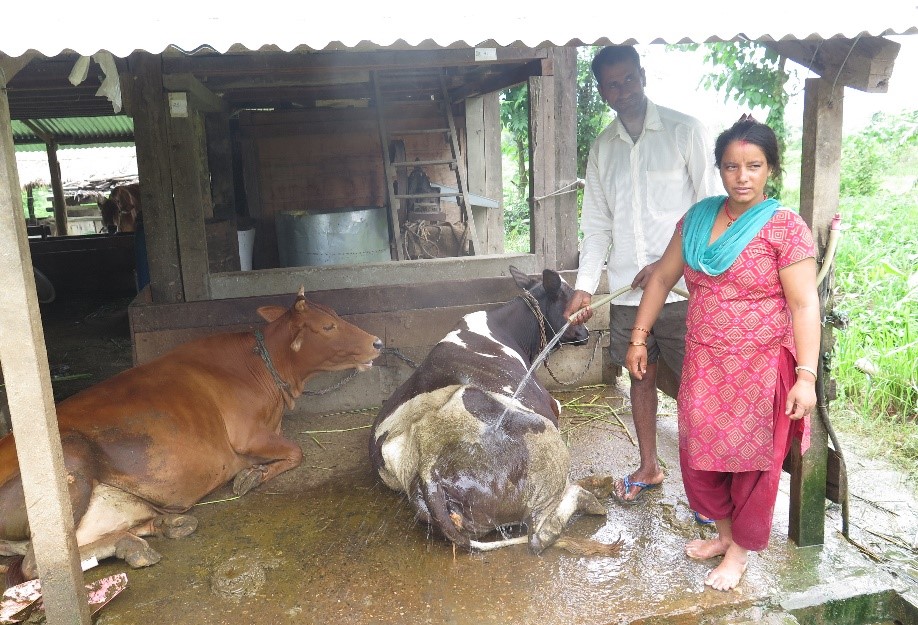
Since installing a solar pump, the Regmi's milk production has increased by 20 per cent, and they can comfortably wash their livestock and keep their farm hygienic.
In the agricultural sector of developing countries, men and women take different roles, and fetching water is a burden predominantly on women. In Mazuru, Zimbabwe, for example, women walk about four kilometres a day carrying buckets of water from the dam — leaving little time for household chores, hoeing, weeding, tending to plants, and other essential work. With rising fuel costs and frequent maintenance, the upkeep of diesel pumps is not affordable for many families.
In Ayodhyapure, in southern Nepal, Sarita Regmi and her husband rely on their livestock for income. Every day, Sarita delivers on average 70 litres of milk to the local milk collection centre, relying on a hand pump to feed and clean their 11 cows. Hand pumps are a common method for water delivery for the majority of farmers in the area, but operating a hand pump is physically intense and consumes a significant amount of time to pump water and carry it to the farm. Sarita was spending two to three hours daily on pumping water by hand, this left her physically tired and limited her time to do other tasks.
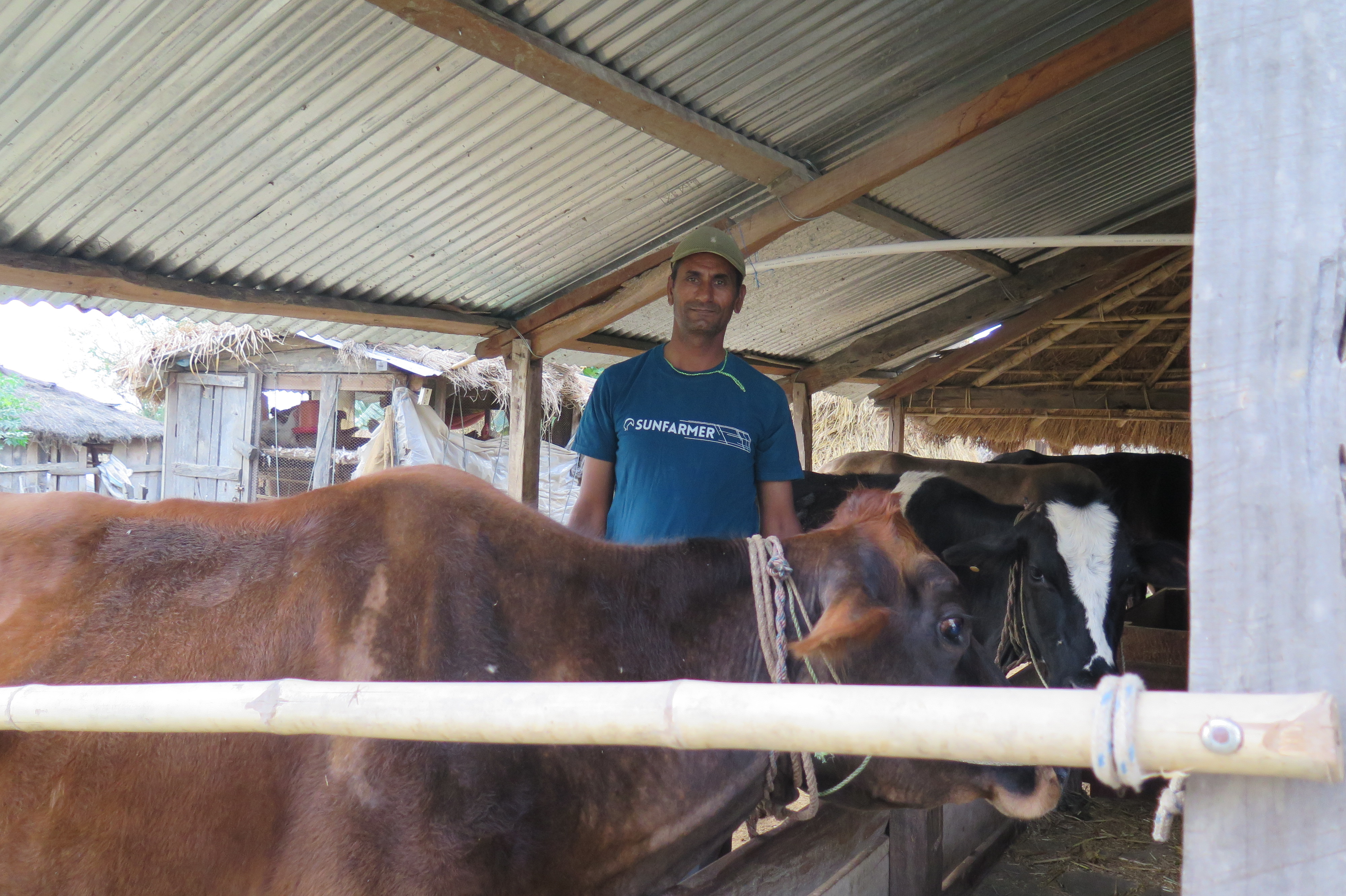
Sarita Regmi's husband with their cattle
To ease this burden and free-up Sarita’s time, she and her husband installed a solar pump. Since the installation, milk production from their cattle increased by 20 per cent, and the water output of the pump comfortably fulfills their water needs, and allows them to wash their livestock and keep the farm hygienic.
“We used to rely on hand pumps and invested a lot of effort drawing water for our livestock. Now with the solar pump, I just have to turn on the switch,” says Sarita. Feeding and washing her cattle now takes Sarita only 30 minutes, compared to two hours with a hand pump.
In addition to making Sarita’s life easier, after just four months the Regmis have seen the health of their livestock improve — newborn calves are healthier and less prone to infections, and the milk production from their cows has increased from 10 to 12 litres per day per animal and is more consistent. By collecting the water used to wash their cattle shed and channelling it to their fish farm, the family has found another way to utilise renewables to improve their lives.
Real economic and quality of life improvements are possible with renewable energy technologies, according to another IRENA report, as they provide water security accessibility, affordability, and safety.
Solar-pumps are particularly useful and cost-effective for crops traditionally grown by women like fruits and vegetables, which feeds families and ultimately improves their nutrition and health.
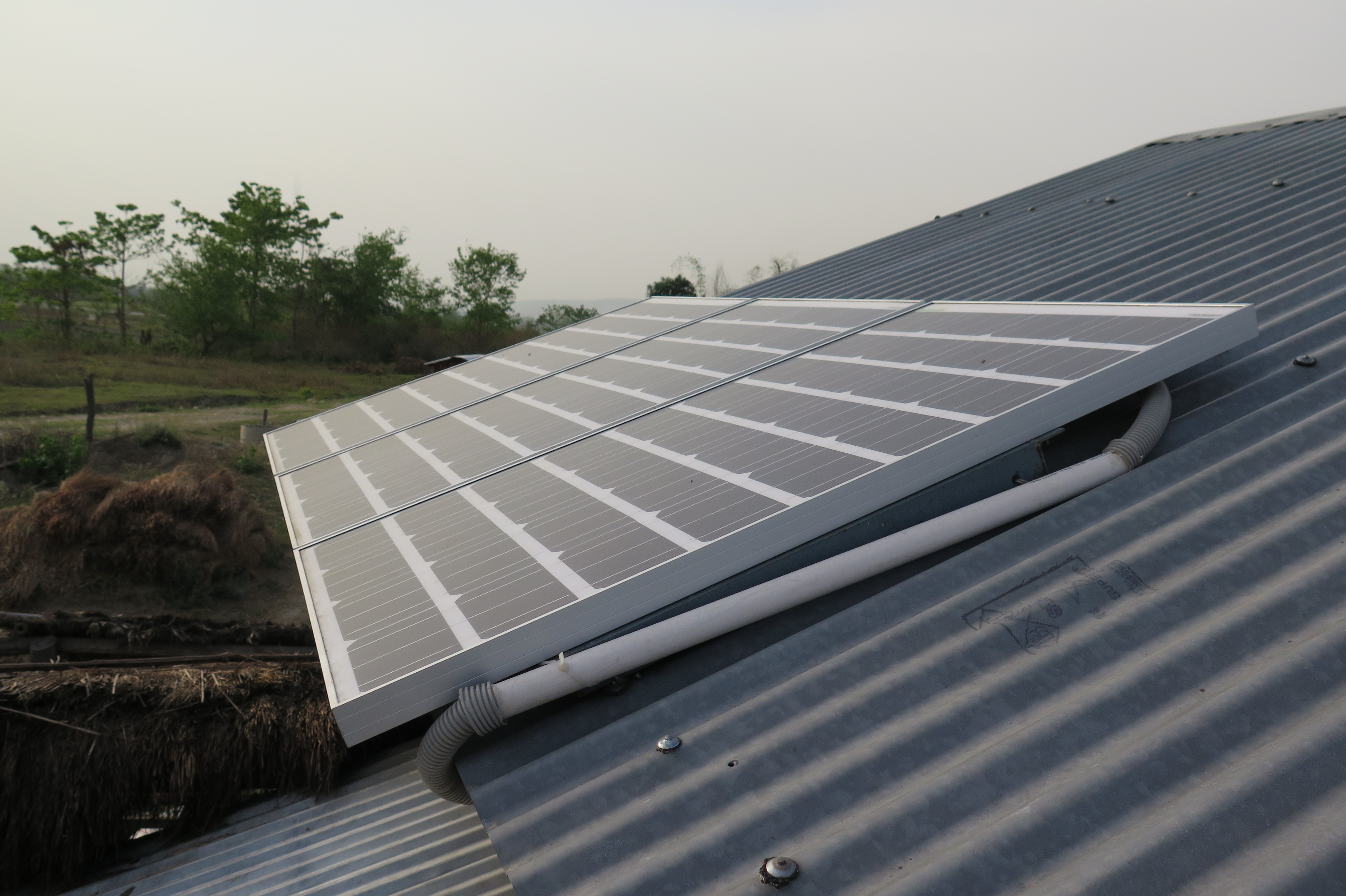
Solar installation at Sarita Regmi's home
Both the Chaudharys and Regmis received their solar-pumps after signing up for SunFarmer’s rural Nepal promotion. They also received an incentive on the system cost, provided by Winrock International and Renewable Energy for Rural Livelihoods. Solar-based pumping solutions are a good example of how renewables can offer a cost-effective alternative to grid- or diesel-based irrigation pump sets.
